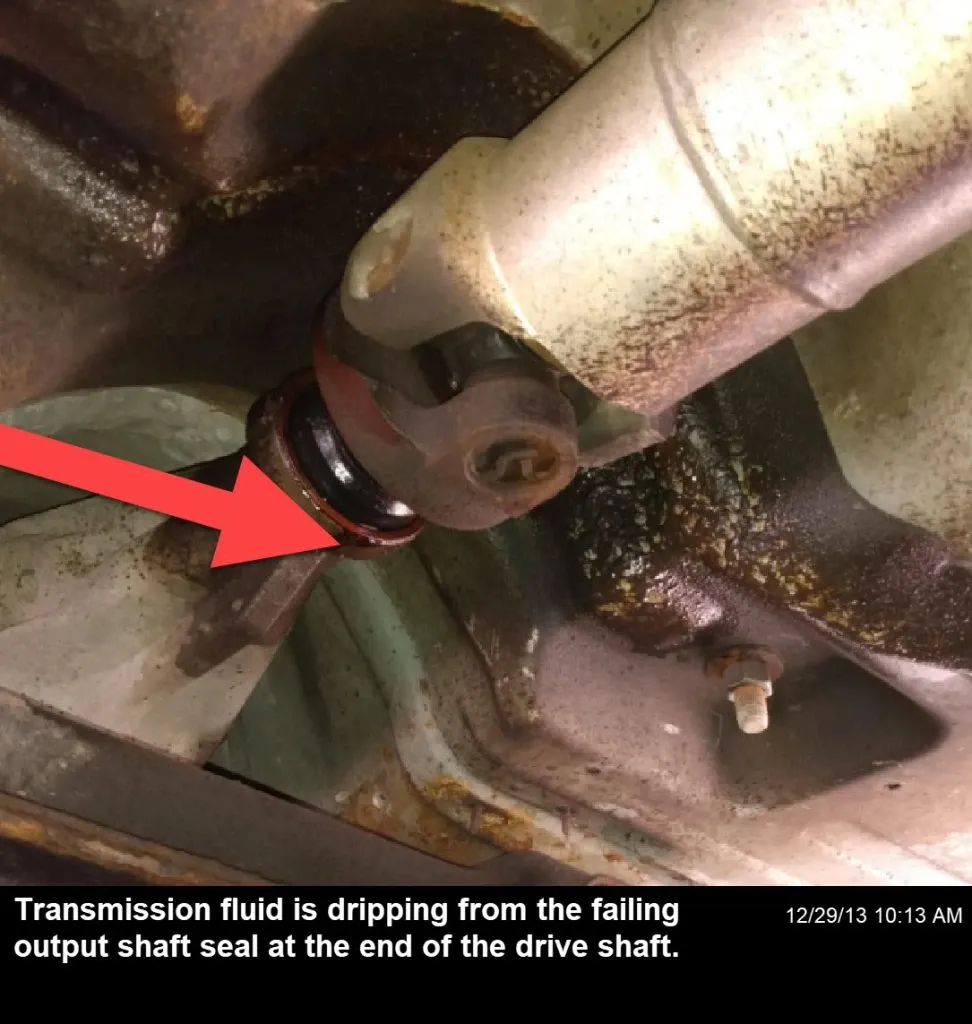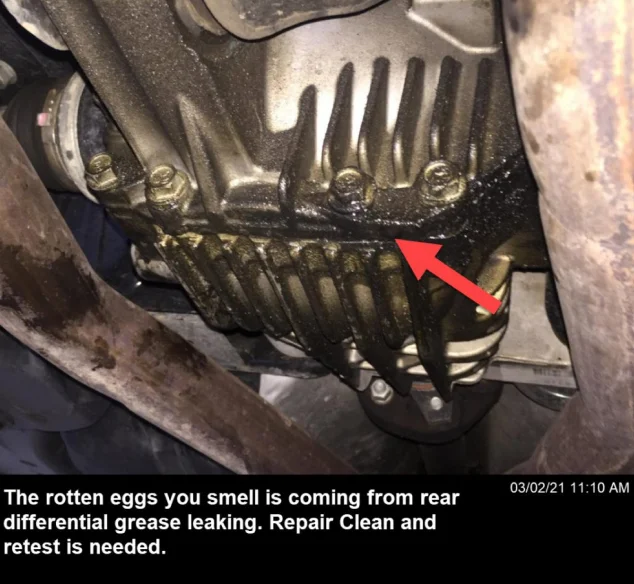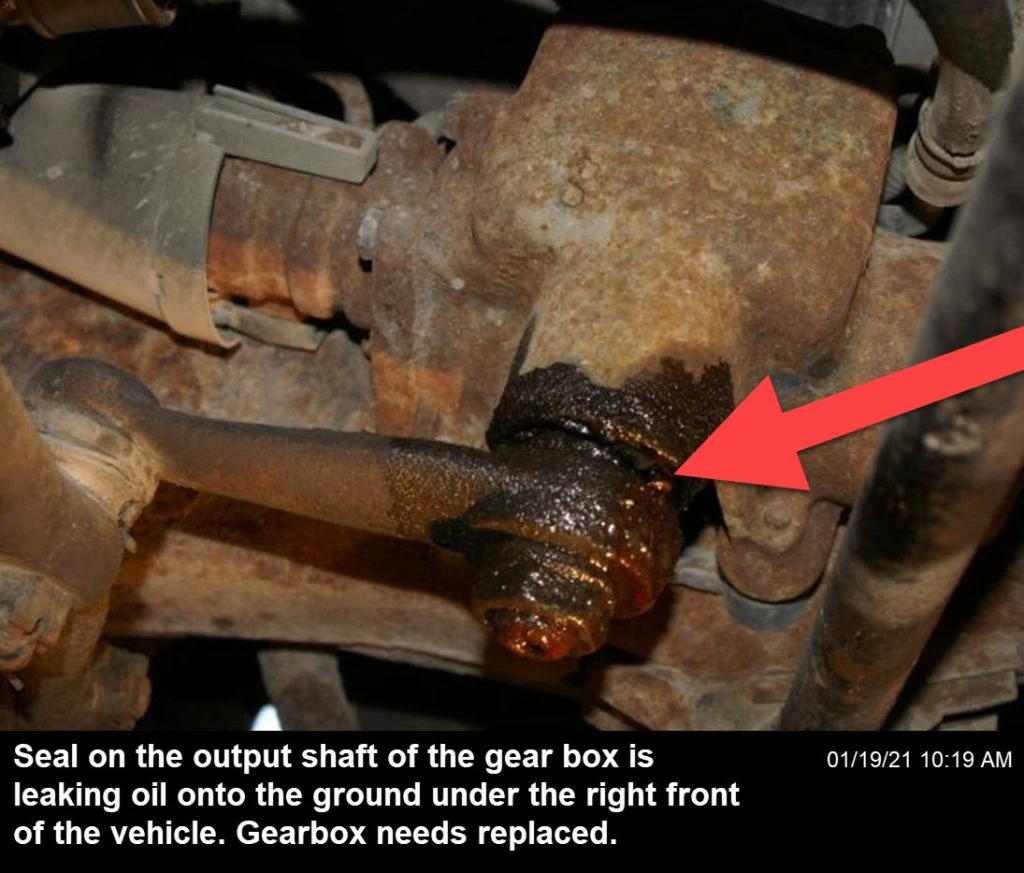
Bad output shaft seal symptoms can be diverse, depending on which part of your car it's located in. Here's a breakdown of the common symptoms for both transmission and transfer case output shaft seals:
Transmission output shaft seal
- Fluid leak: This is the most common symptom. You'll likely see transmission fluid, or gear dripping oil, puddling under your car, especially after driving. The fluid might be reddish or brownish.

- Bad smell: Leaking fluid can fall on hot engine components, creating a burnt oil odor. Plus, leaking transmission fluid, which has a similar composition to differential fluids, has a sulfur rotten egg smell.

- Grinding noises: Low fluid levels due to the leak can lead to grinding noises from the transmission, especially when shifting gears. This causes stress on internal components.
- Difficulty shifting gears: In severe cases, low fluid can make it difficult or impossible to shift gears smoothly.
- Vibrations: In rare cases, a failing output shaft seal can cause vibrations while driving.
Transfer case output shaft seal
- Fluid leak: Similar to the transmission seal, you might see fluid leaking from the transfer case or differential(s), typically gear oil.
- Noises: A failing seal can cause whining, humming, or growling noises from the transfer case, especially when engaged in four-wheel drive.
- Difficulty shifting gears: Low fluid levels can affect shifting into or out of four-wheel drive, depending on the vehicle's drive system.
- Jumping in and out of four-wheel drive: In extreme cases, the transfer case might disengage from four-wheel drive unexpectedly due to low fluid.
It's important to note that these symptoms can also be caused by other issues. If you suspect a bad output shaft seal, it's crucial to have your car or truck inspected by a qualified mechanic. Ignoring the problem can lead to significant damage to your transmission or transfer case, resulting in costly repairs.
Can you drive with a bad output shaft seal?
Driving with a bad transmission or transfer case output shaft seal is very risky. While it might seem possible to drive for short distances in some cases, the risks far outweigh any potential benefit:
Immediate Risks
Transmission/Transfer Case Damage: A leaking seal allows critical lubricating fluid and oil to escape, leading to internal component wear and overheating. This can turn into major damage, requiring expensive repairs or even transmission/transfer case replacement.
Sudden Failure: A completely failed seal could cause complete fluid loss, leading to immediate transmission/transfer case failure while driving. This could leave you stranded and cause safety hazards.
Secondary Risks
Environmental Damage: Leaking fluid can contaminate the environment and is harmful to wildlife and ecosystems. Depending on the fluid pressure, the leaks can stretch to different types of surfaces, posing extra risks depending on where you drive.

Fire Hazard: Leaking fluid can come into contact with hot engine components, increasing the risk of fire.
Alternatives to Driving
Towing: The safest option is to have your car towed to a qualified mechanic for repair.
Professional Repair: Don't attempt to fix the seal yourself unless you have the necessary expertise and tools. Improper repairs can worsen the problem.
Remember, a bad output shaft seal is a serious issue that should not be ignored. Prompt attention can prevent costly repairs and potential safety hazards.
Here are some additional tips:
- If you see any fluid leaks under your car, don't ignore them. Check the color and consistency of the fluid to help identify the source of the leak.
- Pay attention to any unusual noises, especially grinding or whining sounds coming from the transmission or transfer case.
- If you experience difficulty shifting gears, have your car checked promptly.
- Regular maintenance, including fluid changes and inspections, can help prevent output shaft seal failure.
- If you notice any of the symptoms, call a shop nearby (you can find one here)
- Let the professionals at the shop guide you through the next steps






